Big improvements are in store for the more than 80,000 daily riders of the CTA’s Blue Line O’Hare branch. Among the benefits of the multi-year, $492-million Your New Blue project are a variety of station, track and infrastructure improvements.
The project has begun track work and is currently focusing on station renovations. Find specific improvements headed for your area of the Blue Line here:
As we upgrade the Blue Line, we will do our best to limit inconveniences. Riders will see temporary station closures and small delays overnight and on weekends. Check out the latest information on systemwide service changes, sign up for CTA Updates or follow @CTA on Twitter to stay up-to-speed on work that might affect your trip.
Station improvement work
Grand, Chicago & Division stations
These stations opened with the Dearborn Subway in 1951. Many elements, including escalators, finishes and entrances were installed when the station opened.
The project’s scope for Grand, Chicago and Division includes:
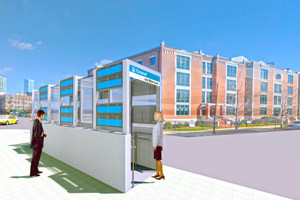 Artist's rendering of possible Grand entrance
Artist's rendering of possible Grand entrance
- Entry stairway improvements:
- New entry kiosks at each stair opening
- New granite stair treads and risers
- New glazed wall tiles
- Repainted ceilings
- Lighting replacement
- Mezzanine improvements:
- Epoxy finish on concrete floor
- New plaster ceilings
- New, high-efficiency lighting
- New stainless steel exit rotogates
- Stairs to platform:
- Replacement of escalators
- Installation of new granite stair treads and risers
- Repainted ceilings
- Lighting replacement
- Platform
- New granite pavers on platform surface
- New stainless steel over concrete block walls
- Replace painted doors with stainless steel
- New light fixtures in steel shroud over platform
- Replacement of furniture
Damen, Western & California stations
Completed January 2015
Station rehabilitation work began at the California station in fall 2014, followed by work at Western and Damen. Though the California and Damen stations were temporarily closed, they were not closed at the same time.
- California was closed for 42 days, from Sept. 4 until Oct. 16, 2014.
- Damen was closed for 63 days, from Oct. 20 until Dec. 22, 2014.
- Western remained open throughout the improvements.
During the closures, additional #56 Milwaukee bus service was added during weekday rush hours, with “owl” service during overnight hours to link the closest stations in either direction of the closed station.
In addition, Divvy, a program of the Chicago Department of Transportation, is Chicago’s bike sharing system served as an alternative for customers during this period. There are Divvy docking stations located near the Damen and California train stations, their neighboring Blue Line stations and throughout the neighborhood. See a map of where Divvy stations are located or find more information about this CDOT program at divvybikes.com.
Some temporary street and alley closures were necessary, as well as parking restrictions, at various times during this project. In the months prior to work beginning and then throughout station work, CTA detailed this project information and impacts to service for Blue Line riders, as well as local elected officials, community members and business owners.
Damen station
Completed December 2014
.jpg)
Damen stairway before and after project work
.jpg)
Damen platform before and after project work
.jpg)
Additional platform improvements at Damen
The Damen station first opened for service in 1895.
Work completed at Damen includes:
- Station Exterior:
- Restoring historic masonry walls and entrance canopy
- New architectural lighting mounted to elevated structure
- Installation of new roofing
- Improve signage, wayfinding and other communications
- Upgrade auxiliary exit to North Avenue, including stair repair
- Installation of public art (installed after completion of station work)
- Station House Entry:
- Installation of additional turnstiles and wider gates
- Repainting of elevated structure
- Installation of new lighting on elevated structure to highlight historic station façade
- Replacement of concrete paving
- Installation of new bike racks
- Station House:
- Replacement of wood flooring with granite
- Restoring historic masonry walls and entrance canopy
- Renewal of interior wall and ceiling finishes
- Improve electrical service, including LED lighting
- Replacement of agent’s booth with pre-fabricated stainless steel booth
- Upgrade water and sewer utilities
- Repair mezzanine stairway (paint, repair balustrades, replace damaged treads/risers, etc.)
- Remove concession space, increasing space for customers from 487 square feet to 660 square feet
- Bike Storage Room:
- Installation of finished flooring and ceiling
- Replacement of lighting
- Upgrades to bike storage system
- Platform:
- Repairs to historic platform stairs
- Restore historic guardrails
- Replacement of wood deck with new wood deck with tactile edge
- Replacement of platform furniture (windbreaks, benches, trash containers, etc.)
Western station
Completed January 2015
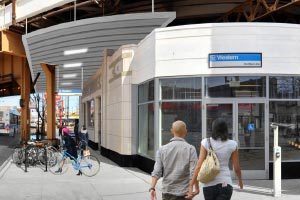
Artist's rendering of improved Western main entrance
Work on the Western Station began in the fall of 2014. The station remained open throughout the project.
The Western station, which was rebuilt in 2000-2001, was already a modern facility in a good state of repair, as such did not require an extensive scope of work as other stations improved under the YNB program.
Work completed at Western includes:
- Upgrades of sewer and water utilities
- Installation of public art (installed after completion of station work)
- Addition of new bike racks
- Installation of new canopy with LED lighting to highlight the station’s façade
- Upgrades to auxiliary entrance and exit, including painting to stairs and decorated perforated panels
California station
Completed October 2014
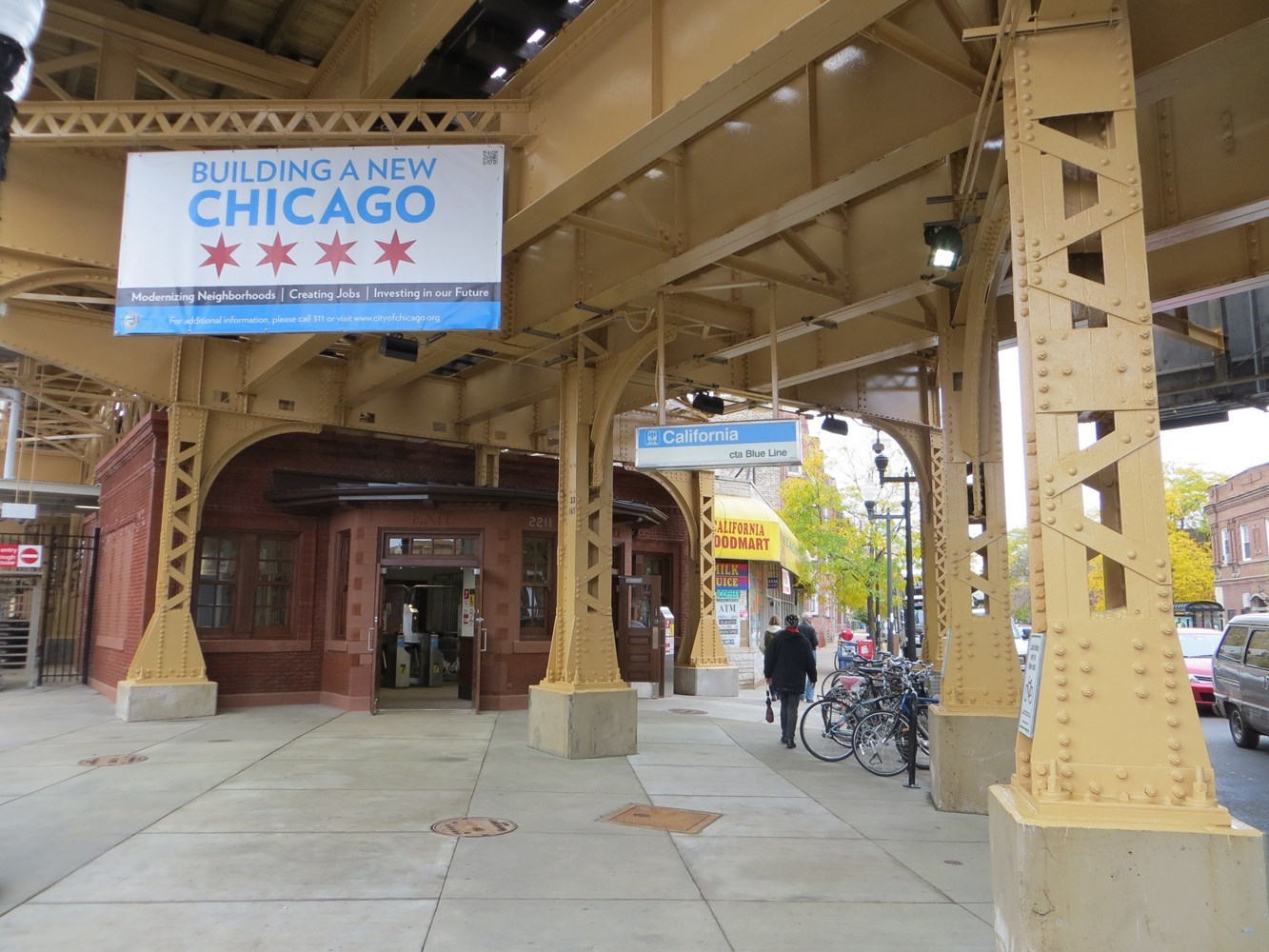
Rehabilitated California station house exterior and repainted infrastructure
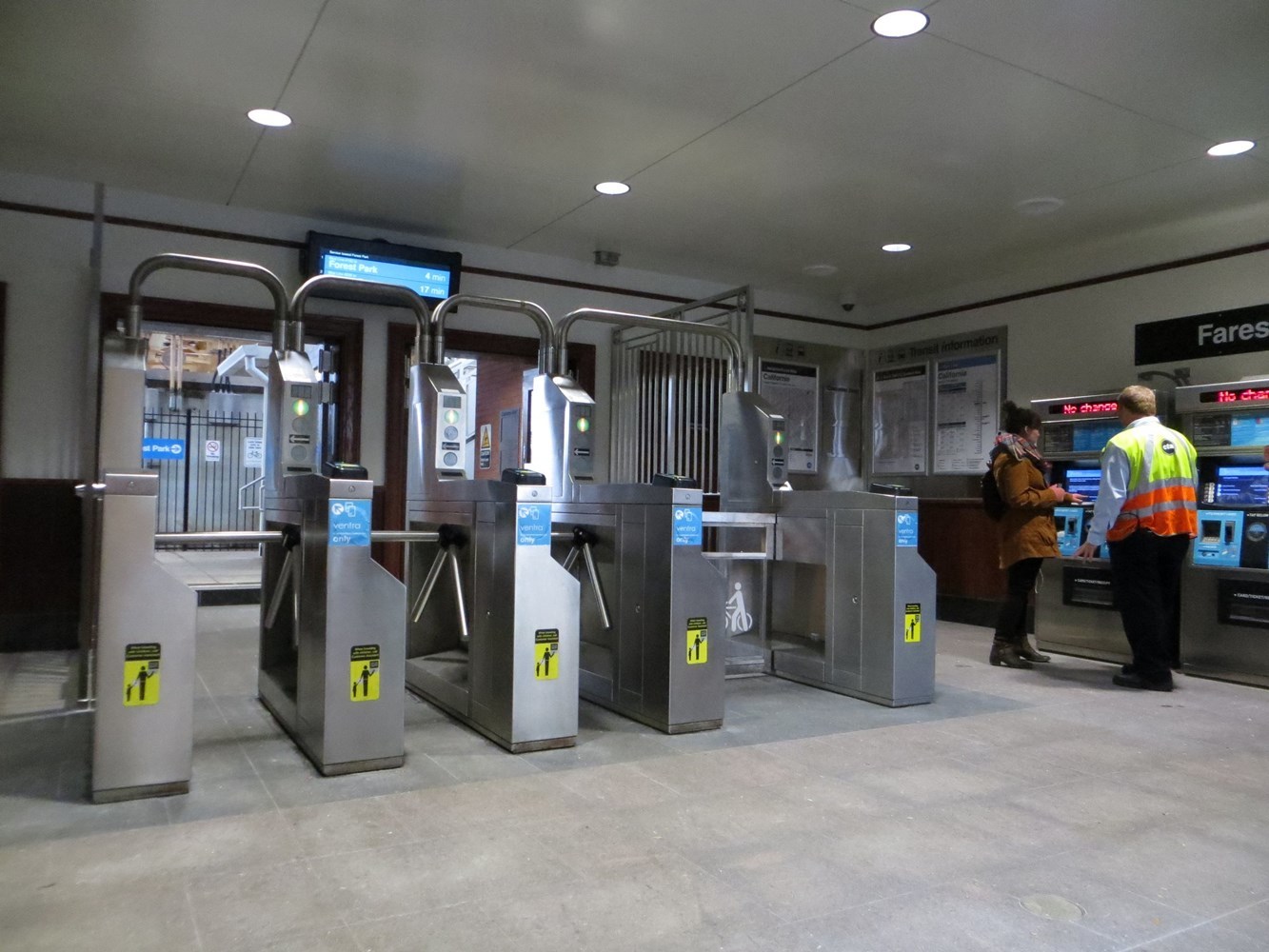
Interior of the expanded and modernized stationhouse
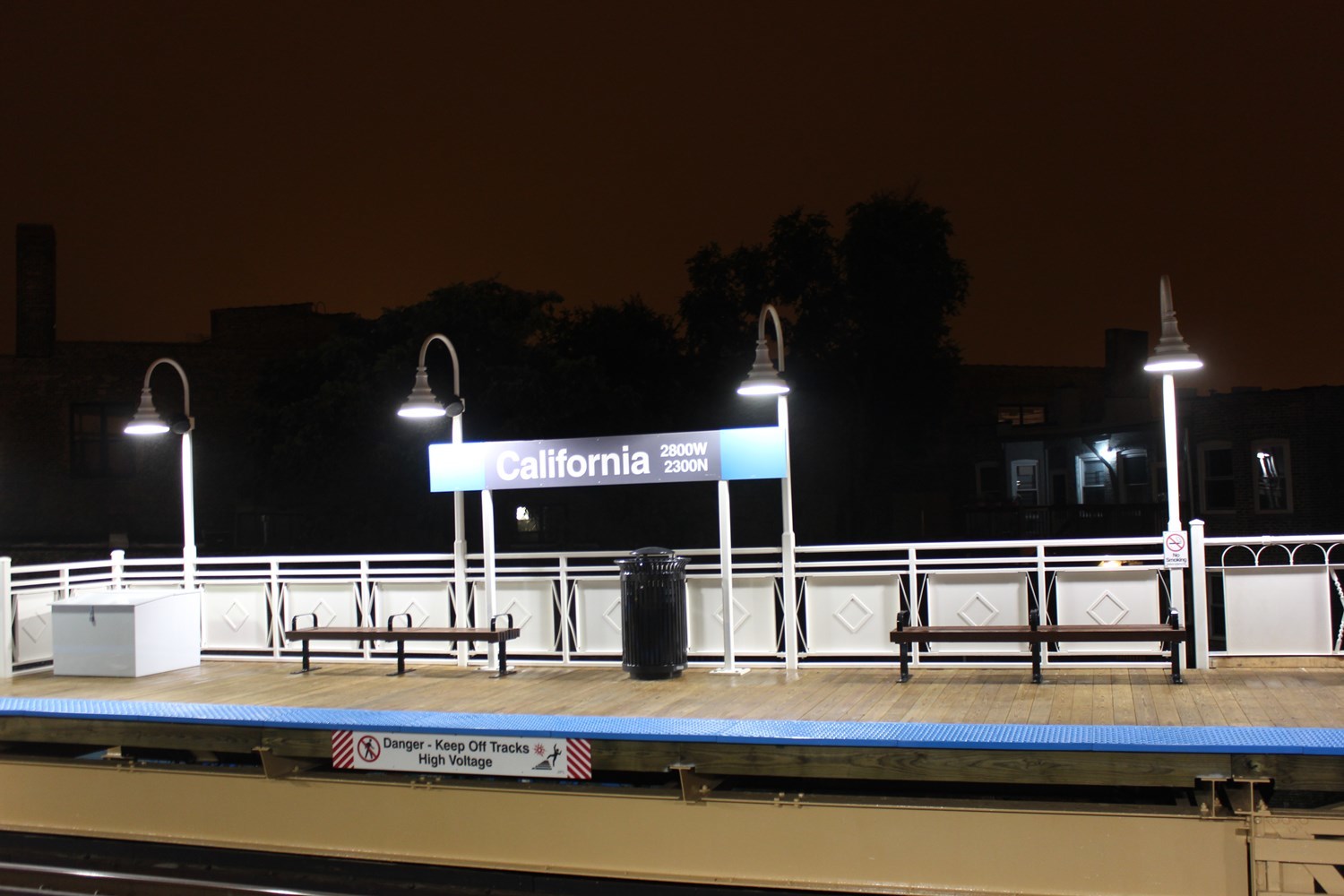
Rehabilitated platform (i.e. new decking, tactile edging, lighting, signage and railings)
The California station, like Damen, opened for service in 1895.
Work completed at California includes:
- Station Exterior:
- Upgrade lighting to include LED lights
- Improve signage, wayfinding and other communications
- Installation of public art (installed after completion of station work)
- Station House Entry:
- Repainting of elevated structure
- Installation of new lighting on elevated structure to highlight the station’s historic façade
- Replacement of concrete paving
- Installation of new bike racks
- Station House:
- Replacement of concrete flooring with granite
- Restore historic masonry walls and entrance canopy
- Renewal of interior wall and ceiling finishes
- Replacement of agent’s booth with prefabricated stainless steel booth
- Platform:
- Replacement of wood deck with new wood deck with tactile edge
- Replacement of platform furniture (windbreaks, benches, trash containers, etc.)
Logan Square station
Designed by famous Chicago architecture firm Skidmore, Owings & Merrill, the Logan Square subway station replaced an 1895 elevated station with a modern, airy, open, subway station underground.
The project’s scope for Logan Square includes:
- Station upgrades:
- Auxiliary entrance / plaza on south side of Milwaukee
- Auxiliary entrances on Spaulding
- Upgrade station electrical (power and lighting)
- Refurbishment of two elevators
- Transit-oriented development concepts around the station:
- Potential mixed use (retail + residential)
Belmont station
Completed March 2019
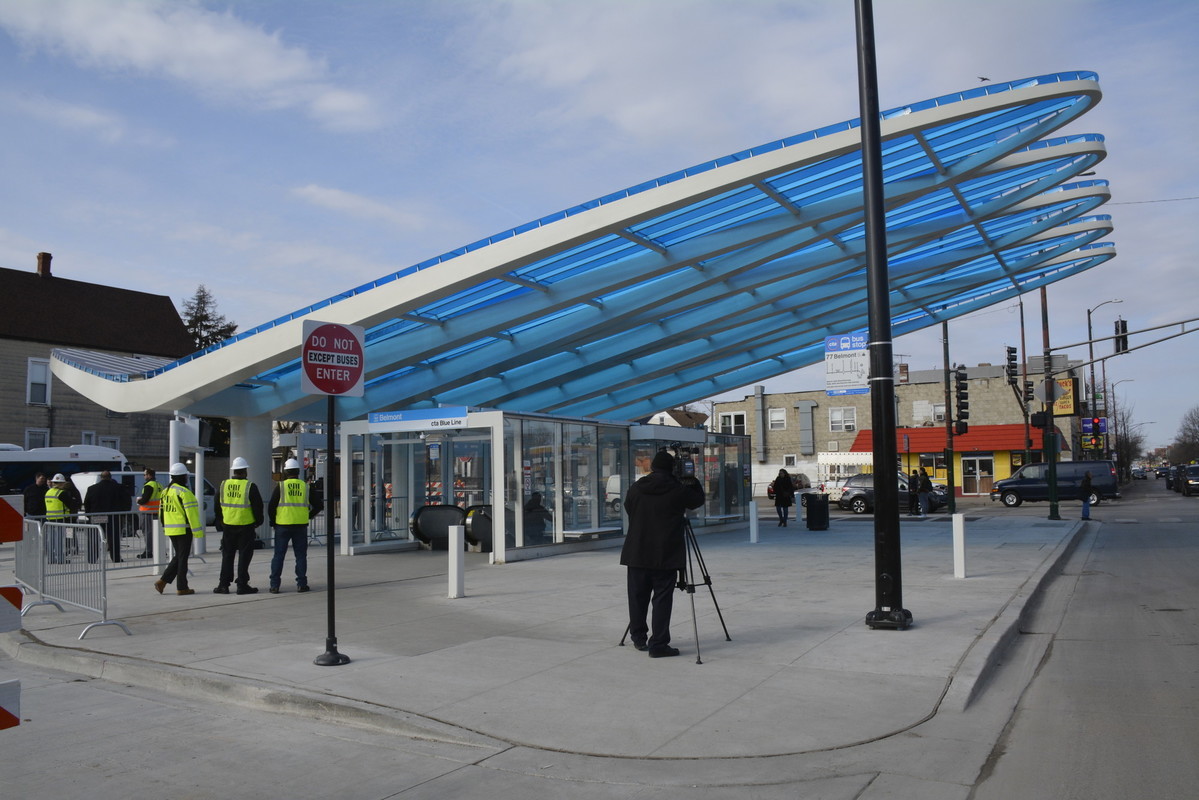
New architectural canopy constructed at the Belmont Blue Line station entrance and bus boarding area.
One of the busiest bus-to-rail transfer locations, serving both the #77 Belmont and the #82 Kimball/Homan routes, the Belmont station was constructed in 1970 and has only received minor repairs and upgrades since its opening.
Work completed at Belmont includes:
- Construction of new street level 'gateway' canopy designed by architectural firm Carol Ross Barney
- New signage
- Replace concrete in bus turnaround
- Replace platform surface at track level
- Paint interior surfaces
- Electrical upgrades
For additional information regarding future accessibility improvements for the Belmont Blue Line station, please see the following statement from CTA.
Addison station
Completed November 2016
Upgrades to the Addison station began in fall 2015 with the goal of improving the station and adding an elevator to make the station fully accessible.
Work completed at Addison includes:
- Elevator installation
- Construction of a new stairway
- Extension of the stationhouse to enclose new stairway
- Repair of platform edge and replacement of tactile edge
- Improvements to the platform and platform canopies
- Repair and refurbishment of platform furniture (i.e. benches, windbreakers, trashbins, etc.)
- New platform and stationhouse lighting and security cameras
- Deep cleaning and painting of stationhouse and platform
Designed by famous Chicago architecture firm Skidmore, Owings & Merrill, the Addison station was part of the Kennedy Extension opened in 1970.
Jefferson Park station
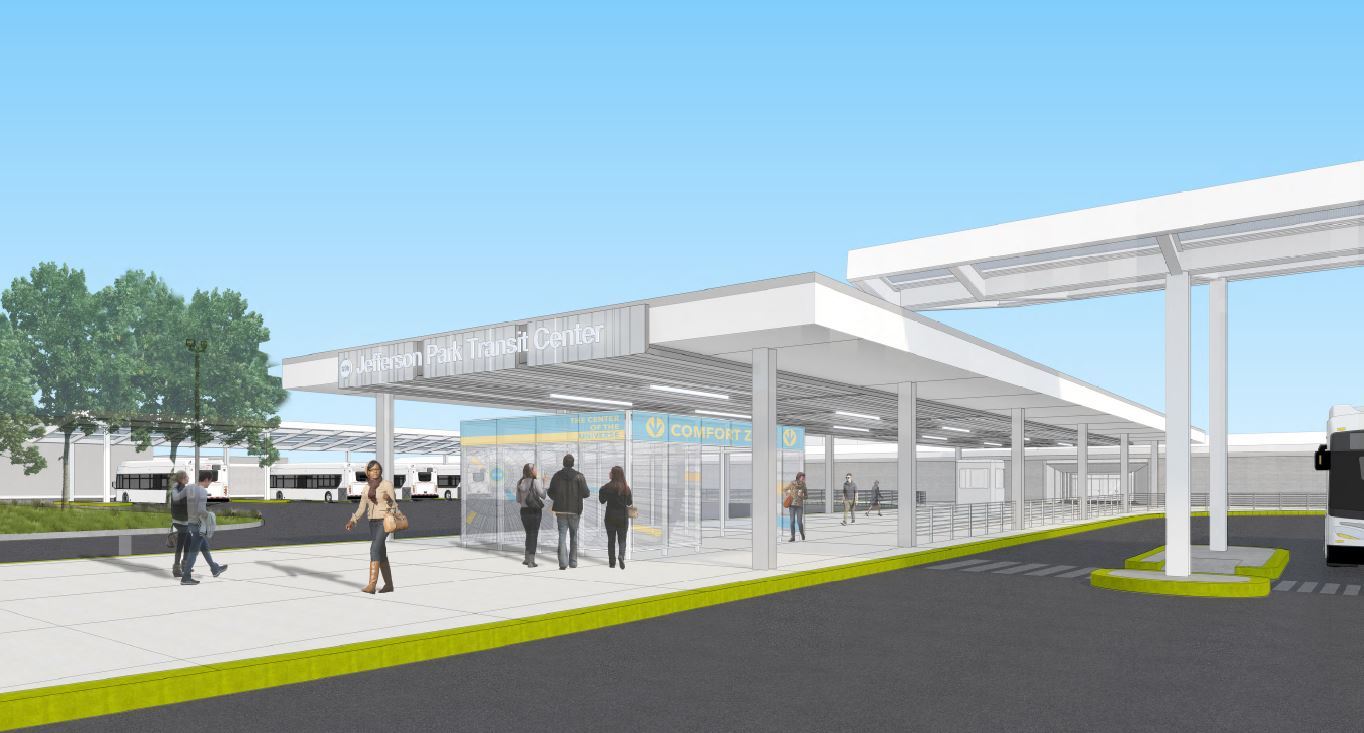
Proposed artist rendering of new Jefferson Park bus terminal
Designed by famous Chicago architecture firm Skidmore, Owings & Merrill, the Jefferson Park station was the terminus of the original Kennedy Extension of the Milwaukee ‘L’ and opened in 1970. Service would later be extended beyond this station to O’Hare International Airport.
The project’s scope for Jefferson Park includes:
- Bus turnaround improvements:
- Replacement of entry canopy
- New LED lighting
- Installation of public art
- New HD cameras and public announcement speakers
- Reconfigured layout for improved accessibility
- Refinished furniture (i.e. benches, trash bins, windbreaks, etc.)
- New signage, wayfinding and digital displays
- Repair/replace concrete
- Station improvements:
- Repair to roof and deteriorated curtain wall
- Electrical upgrades
- Repainting of the station exterior
- Replacement of the escalators and stairs
- Replacement of lighting
- Repair and refinishing of all surfaces
- Platform improvements:
- Replacement of platform edge and topping
- Replacement of the canopy skylight system
- Replacement of lighting
- Repair and refinishing of all surfaces
- Repair/replace furniture (i.e. benches, windbreaks, etc.)
- New signage
- New HD cameras
 September 2018 update
September 2018 update
Beginning 9am Mon, Oct 1
Jefferson Park North Bus Terminal Temporary Closure
To renovate the Jefferson Park Blue Line Station bus terminal and rebuild the bus bays, temporary closure of the north terminal will be required. While the north terminal is closed, the south terminal will remain open at all times.
During the closure, the boarding locations for bus routes will be moved; some routes will board at a temporary stop on Milwaukee Avenue.
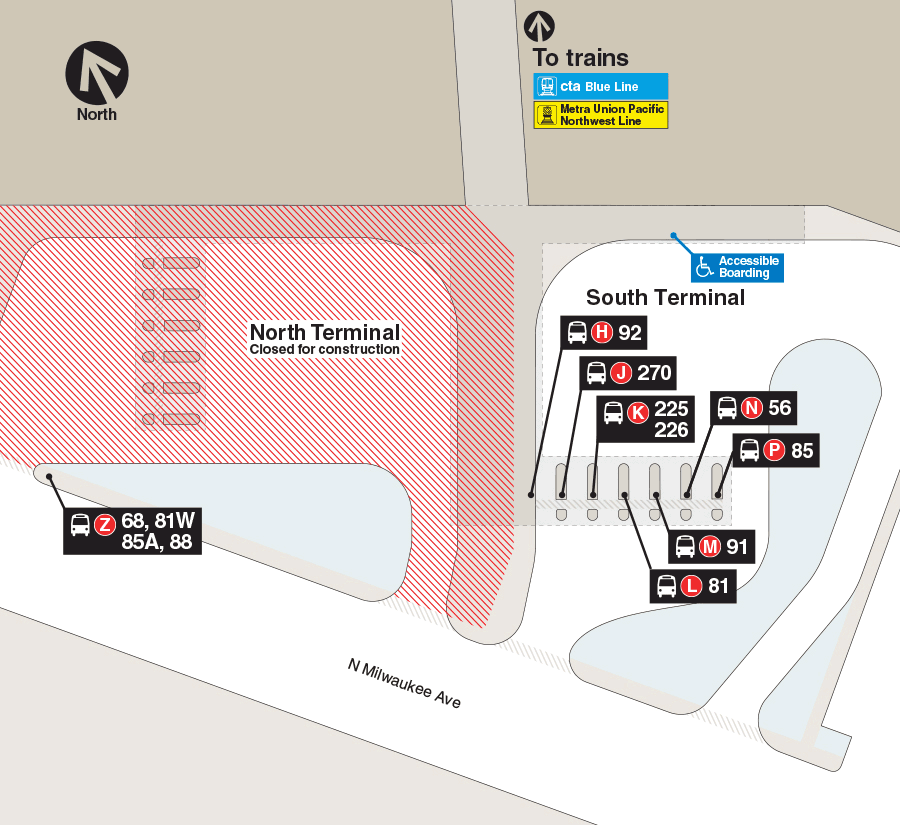
See alert for full details, including bus boarding location information
Other alerts and more:
Irving Park thru Cumberland stations
Completed November 2016
These stations opened either as part of hte Kennedy extension via subway and expressway median from Logan Square ro Jefferson Park, or as part of the extension toward O'Hare, which was completed in 1984.
Work completed for these stations includes:
- Renewal work of each stationhouse and platform, which includes painting and new lighting
- Platform canopy repairs at all locations
- Rehab platform furniture (i.e. benches, windbreakers, trash bins, etc.) at all locations
- Repair platform edges at all locations
- New concrete platform topping and tactile edging at Addison, Irving Park, Montrose and Cumberland
- Repair and replace damaged platform granite pavers and new tactile edging at Harlem
- Replacement and rehabilitation of curtain walls of stationhouse, platform, and walkways at Cumberland and Harlem, respectively
- Walkway railing and edge plate replacement at Irving Park and Montrose
- Improved lighting and security

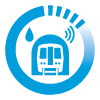

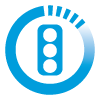
Track & infrastructure work
Milwaukee Elevated improvements
Major improvement work on the Milwaukee Blue Line tracks occurred in 2014, improving the elevated tracks near Milwaukee Ave., from south of the Logan Square stop through the Damen stop. This section of the line opened in 1895 and the structure that supports the tracks was also built during that era.
The project's scope for the Milwaukee Elevated includes:
- Replacement of wooden track ties atop the structure
- Replacement of tie plates and fasteners
- Replacement of foot walks
More information: Milwaukee Blue Line Track Renewal
Dearborn Subway improvements
The Dearborn Subway was largely built in the late 1930s and early 1940s, and opened in 1951. Blue Line service operates through the Dearborn Subway from near Division to near Clinton, through the downtown area .
The project’s scope for the Dearborn Subway includes:
- Installation of water management system in the subway tubes/tunnels
- Replacement of damaged concrete rail ties
- Repairs to station caused by water infiltration, including:
- Repairing and repainting walls in tube/tunnel
- Repairing, cleaning and refinishing platform surfaces
- Installing new platform lighting
- Replacing signage
Kimball Subway improvements
The Kimball Subway, inside which the Belmont and Logan Square stations are situated, opened in 1970 as part of an extension of the old elevated to Logan Square through a subway and expressway median line out to Jefferson Park (before the line was extended to O’Hare).
The project’s scope for the Kimball Subway includes:
- Installation of a water management system within the tunnels
- Replacement of damaged rail ties
- Repairs to station caused by water infiltration, including:
- Cleaning masonry walls in tunnels
- Repairing, cleaning and refinishing platform surfaces
- Replacing signage at platform
Signal work
Starting in early May, crews will begin work on one of the biggest components of Your New Blue: The modernization of signals between Jefferson Park and O’Hare. The $200M project will help us improve service, increase reliability and add more trains to the line during the busiest parts of the day.
The project—the first such overhaul since the line was extended from Jefferson Park to O'Hare in the early 1980s—will help ensure less-crowded commutes, better service and fewer delays.
Improvements from the signal project
The work will replace signal relay houses and the equipment inside them, cabling and switch machines over the approximately eight miles of Blue Line (covering more than 16 miles of track) from Jefferson Park west-northwest to O'Hare.
Benefits include:
- Changes to the design of the signal system that allow us to run more frequent service between Jefferson Park up through O'Hare (more frequent trains allows additional capacity)
- Improvements to aging equipment, infrastructure and signal systems that date back to the early 80s, decreasing the likelihood for signal-related delays and improving overall safety and service reliability
- Improvements to track infrastructure and switches in the area just northwest of Jefferson Park where we store/turn back extra trains (the middle track near Foster Ave) which supplement service and capacity in the busy core of the route to improve safety and reliability in the area
- "Worker-ahead" signals and warning system improvements to help protect track workers and other personnel at track level such as for times when track maintenance work and inspections are being done
Some track replacement work will also occur in conjunction with the signal upgrade project in the O'Hare subway/tunnel approach.
This work is a critical part of our broader efforts to bring more reliable, better and more frequent service to the Blue Line and, along with other upgrades happening in tandem, shave time off people's trips and increase overall capacity.
Impact to service
What types of disruptions should I expect?
In addition to more common overnight and off-peak work requiring trains to share a single track, several temporary closures of portions of the Blue Line—typically between two stations and over a single weekend at a time—will need to occur.
Only one section of route will be closed at a time, and a major, load-and-go shuttle bus operation to bridge a closed section of the route will be provided, free to all riders upon boarding and with free reentry to the Blue Line with Ventra Card, Ventra Ticket, or contactless payment.
This impact will be similar to work CTA completed on the Milwaukee Elevated section of the O'Hare Branch of the Blue Line through Logan Square, Bucktown and Wicker Park a few years ago. We encourage riders to allow significant extra travel time due to the need to change for shuttle buses when major work events are being done.
To find out when work might affect you, visit our Blue Line page to see all current, upcoming and accessibility alerts that affect Blue Line service and riders. We also encourage you to sign up for CTA Updates to get texts/e-mails about both planned and unplanned events that might affect your trip.
Why are these disruptions necessary?
This is a complete replacement of signaling systems from Jefferson Park to O'Hare and will require periods of major work where cabling and conduit work in the track bed will need to be laid, removed and/or replaced.
Work on rails - such as replacing switch equipment, signal equipment along the track, hardware and conduit along/under the track, electrical connections and rail joints - require that we stop train service to let workers proceed safely and quickly to get the job done.
Big picture benefits
These improvements are a key step to running more trains, more frequently, with even better safety and reliability, allowing us to add more service and capacity to accommodate the bustling Blue Line corridor from downtown to O'Hare in the future.
Adding capacity and being able to run more frequent trains not only provides a better commute, but also has the added benefit of decreasing the likelihood that a moderate delay will have rippling effects, such as slower recovery after a delay, more crowded trains and platforms, longer station stops and sluggish/uneven service across the whole line.
Together, along with power upgrades to allow us to have the track power capacity to run more trains, track improvements on multiple parts of the O'Hare branch and new railcars to replace aging ones, this major signal project plays a key role in providing you with a better Blue Line!